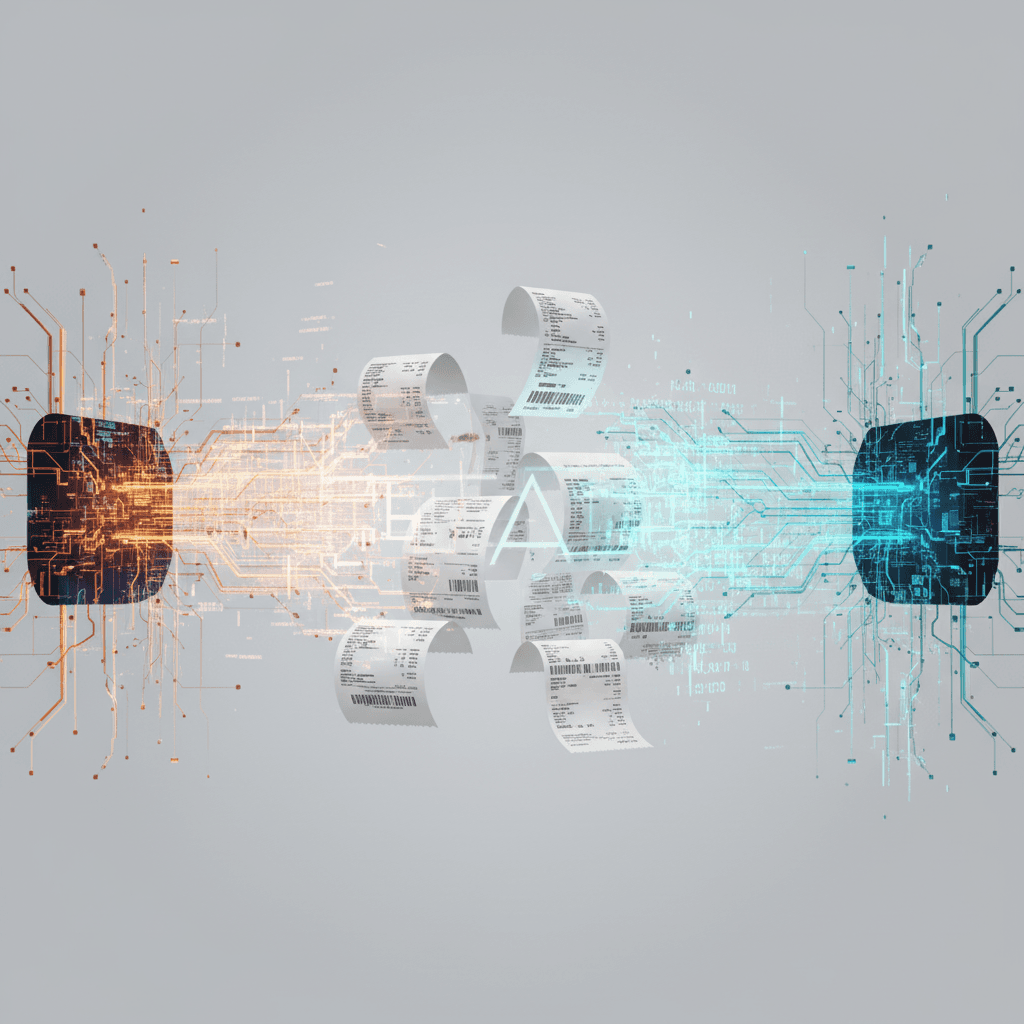AI Creates Flawless Fake Receipts, Igniting New Global Fraud Battle
Hyper-realistic AI-generated receipts make 'seeing is believing' obsolete, triggering an urgent AI-on-AI battle for financial trust.
October 27, 2025

A new front has opened in the battle against corporate fraud, fueled by the rapid advancement and accessibility of artificial intelligence. Expense management giant SAP Concur is raising the alarm over a significant surge in hyper-realistic fake receipts generated by AI, a trend that is quickly rendering traditional methods of expense verification obsolete. The sophistication of these forgeries is so high that businesses are being warned to no longer trust visual inspections alone, ushering in a new era of technological cat-and-mouse between fraudsters and security systems. This development poses a substantial threat to companies globally, as AI lowers the barrier to entry for committing expense fraud from a specialized skill to a simple text prompt.
The startling rise in this new form of financial misconduct is underscored by data from across the expense management industry. Software provider AppZen reported a dramatic increase in AI-generated fakes, which accounted for approximately 14% of all fraudulent documents submitted in September, a figure that was zero just a year prior.[1][2] Similarly, fintech firm Ramp revealed that its recently implemented AI-powered detection software successfully identified and flagged over $1 million in fraudulent invoices within its first 90 days of operation.[1][2] This wave of synthetic receipts has been particularly pronounced following the release of more advanced image generation models, such as OpenAI's GPT-4o.[1][2] A survey of financial professionals in the U.S. and the U.K. by the expense management platform Medius found that about 30% had observed an uptick in falsified receipts after the launch of this powerful new AI tool.[1][2] The realism of these AI-creations is a key factor in their success; they can mimic everything from crumpled paper and realistic stains to detailed itemizations that correspond with actual restaurant menus.[2]
The implications of this AI-driven fraud are far-reaching, extending beyond simple financial losses to challenge the very foundations of trust in digital documentation. What once required proficiency in photo-editing software like Photoshop can now be accomplished in seconds by anyone with access to free and user-friendly AI programs.[3] This democratization of forgery capabilities means that the "fraud triangle"—a framework identifying incentive, opportunity, and rationalization as the key drivers of deceit—has been dangerously amplified.[4] The "opportunity" aspect, in particular, has expanded exponentially. Research conducted by SAP in July found that nearly 70% of chief financial officers believe their employees are using AI to attempt to falsify travel expenses or receipts.[1] The ease with which these forgeries can be created is leading to a significant issue for organizations, as there is now virtually no barrier to entry for individuals looking to commit this type of fraud.[1]
In response to this escalating threat, the AI industry finds itself in a technological arms race, pitting AI-powered fraud against AI-driven detection. Companies like SAP Concur are now deploying their own sophisticated AI tools to counter the surge. SAP Concur's Verify service, for instance, now inspects the metadata of receipt images to identify those likely created by AI and flags them for human review.[5] This AI-on-AI approach is becoming the new standard for defense. Detection systems are being designed to analyze pixel patterns, cross-reference vendor details against historical data, and identify subtle inconsistencies that would be invisible to the human eye.[6][4] However, fraudsters are adapting by taking screenshots of AI-generated receipts or printing and rescanning them to strip away revealing metadata.[2] This constant evolution of tactics necessitates a multi-layered defense strategy, with some experts advocating for a move away from image-based verification altogether and towards systems that rely on verifiable data pulled directly from vendors.[3]
Ultimately, the rise of AI-generated fake receipts signals a fundamental shift in the landscape of financial security. The age-old adage of "seeing is believing" is no longer a reliable standard for financial verification. As AI models continue to improve, the line between authentic and fabricated documentation will only become more blurred. This new reality demands a paradigm shift in how businesses approach expense management, moving from reactive, manual checks to proactive, technologically-driven validation. The challenge for the AI industry will be to stay one step ahead of those who would exploit its innovations for illicit gain, ensuring that the same technology that creates these new risks also provides the most effective solutions. The battle against AI-fueled fraud is just beginning, and it will require continuous innovation and a healthy dose of skepticism in the digital age.